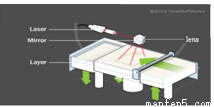题目内容
阅读下面短文,从短文后各题所给的四个选项(A、B、C 和 D)中,选出可以填入空白处的最佳选项,并在答题卡上将该项涂黑。
Lightning flashed, thunder boomed, and the rains poured down.
Suddenly, a wail(尖叫) of a steam engine ________ the storm. It was moving closer and would cross Honey Creek Bridge. The old wooden frame(框架)of the bridge began to shake ________ the steam engine started across. When the train reached the halfway point, the bridge ________. Finally, it collapsed, breaking completely apart.
“The bridge collapsed!” Kate shouted to her sick mother. “I’ve to ________ the station. A train full of ________ is due here.” ________ a lantern, Kate raced out into the storm. The ________ way to get there was to ________ the Des Moines River Bridge.
The bridge was little more than two steel rails stretched across narrow wooden strips, which were spaced so far apart that Kate could easily ________ between them. Getting down on her hands and ________, Kate began her dangerous crossing. A strong wind quickly ________ out the lantern, so Kate had to feel her way in the darkness. Finally, she was ________ across the river!
Kate hurried to the station and burst through the ________. “Honey Creek Bridge is out!” she shouted to the ________. “Stop the passenger train!” Then, extremely ________, she fell to the floor.
Rushing out onto the tracks to give a ________, the stationmaster was just in time to ________ the train.
Years later, a new bridge named Kate Shelly Bridge was built across the river ________ people could always remember the ________ of the girl, Kate Shelly,who ________ her life and saved so many people.
1.A. added toB. cut throughC. headed forD. led to
2.A. unlessB. soC. as soon asD. in order that
3.A. roseB. connectedC. bentD. moved
4.A. warnB. accuseC. phoneD. leave
5.A. foodB. passengersC. animalsD. coal
6.A. Catching hold ofB. Taking notice of
C. Keeping up withD. Putting up with
7.A. worstB. widestC. shortestD. toughest
8.A. avoidB. rebuildC. repairD. cross
9.A. runB. fallC. jumpD. walk
10.A. cheeksB. fingersC. wristsD. knees
11.A. tookB. letC. pickedD. blew
12.A. regularlyB. easilyC. politelyD. safely
13.A. bridgeB. homeC. doorD. train
14.A. headmasterB. conductor
C. stationmasterD. repairman
15.A. tiredB. surprisedC. embarrassedD. disappointed
16.A. welcomeB. signalC. responseD. lesson
17.A. approachB. driveC. pullD. stop
18.A. in caseB. as ifC. so thatD. even if
19.A. patienceB. braveryC. guidanceD. confidence
20.A. sacrificedB. spentC. riskedD. lived


